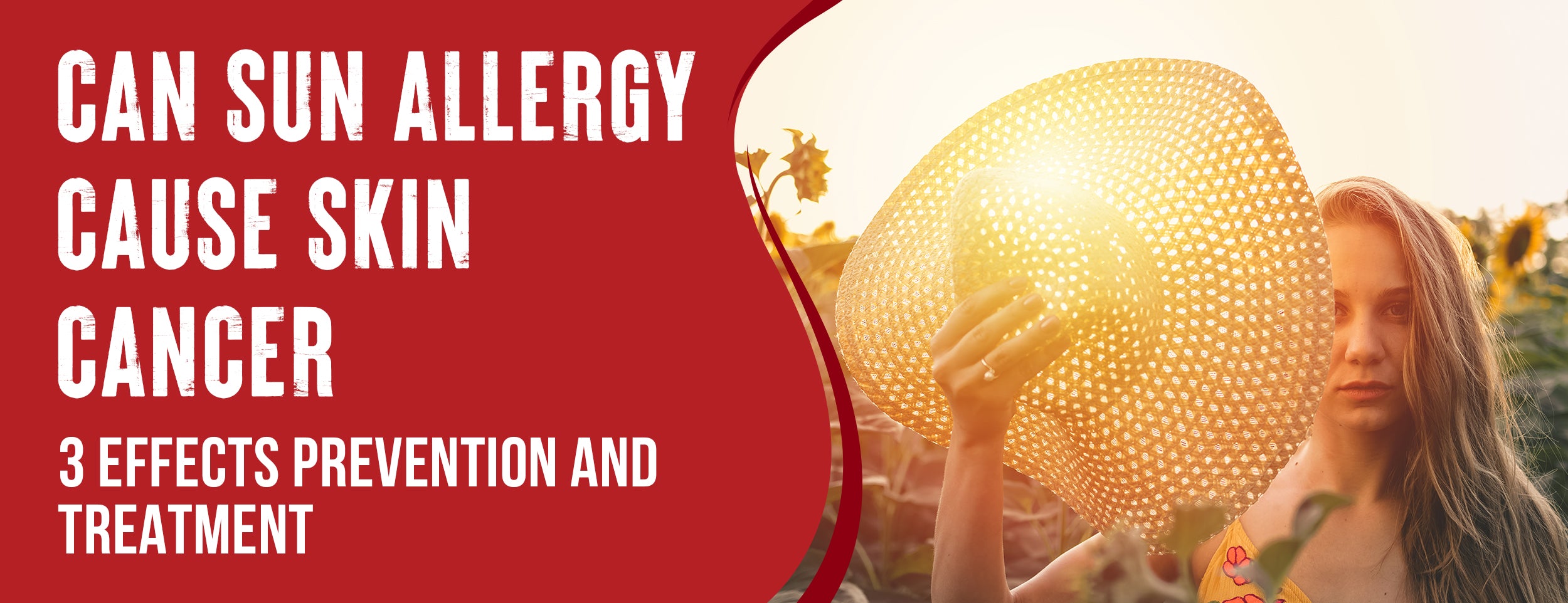Symptoms include plaques, blisters, scaling, and hives all caused by contact dermatitis (eczema caused by specific substances). Scratching may lead to infection because of bacteria/fungi growth in a moist environment.
To get rid of contact dermatitis fast, identify and steer clear of the irritant initially. Then, apply an anti-itch cream and take medication for relief. Use cool compresses and shield your skin to swiftly ease symptoms quickly.
In this blog post, we'll guide you from grasping the basics of this condition to quick relief methods and natural remedies. Plus, we'll offer pro tips on preventing future flare-ups and knowing when to seek professional help.
How To Get Rid Of Contact Dermatitis Fast: 3 OTC Treatments

When dealing with contact dermatitis, finding fast relief is a top priority. Several effective treatments are available, from over-the-counter remedies to prescription options. Let's explore these further.
Prescription Treatments
A doctor may prescribe more potent treatments for more severe cases of contact dermatitis. Some include:
- Prescription Steroid Creams or Ointments: These are more potent than OTC versions and can provide faster relief.
- Anti-immune therapy: These medications reduce inflammation by suppressing your immune system.
- Alitretinoin: This capsule treatment for severe eczema affecting the hands.
The Role of Antihistamines in Managing Symptoms
Antihistamines are crucial in managing contact dermatitis symptoms. They block histamine, a substance your body produces during an allergic reaction that causes itching. Creams and pills are available that contain antihistamines.
Alternatives To Prescription Drugs
Over-the-counter (OTC) treatments can provide quick relief for mild-to-moderate symptoms of contact dermatitis. Here are some standard OTC options:
- Hydrocortisone Creams: These specialized creams reduce redness and itching effectively, providing soothing relief for irritated skin.
- Calamine Lotion: Calamine lotion offers a soothing touch for irritated skin, alleviating itching and inflammation. The affected area should be applied with a thin product layer and allowed to dry.
- Apply a Cool Compress: This can help alleviate skin irritation and decrease inflammation. Prepare a cold compress by soaking it in chilly water, wringing it out, and gently applying it to the skin.

For Rid Of Contact Dermatitis: 3 Natural Remedies
If you prefer a more natural approach to managing contact dermatitis, several remedies can help soothe your skin and reduce inflammation. Let's discover some of these remedies and how you can easily make them home.
Common Natural Remedies and Their Benefits
Natural remedies can offer relief from the itching and irritation caused by contact dermatitis. Here are a few popular ones:
- Aloe Vera: Regarded as a soothing plant, aloe vera, a succulent plant native to tropical climates, has been used for centuries in various cultures for its skin benefits. When applied topically, its gel can help ease redness, itching, and inflammation, making it a popular natural remedy for skin irritations.
- Oatmeal: Oatmeal baths calm irritated skin with natural properties that reduce redness, inflammation, and itching. They offer gentle relief for skin conditions, promoting healthier, happier skin.
- Coconut Oil: This natural and nourishing moisturizer is infused with hydrating properties that work wonders on maintaining your skin's moisture levels. This product can effectively combat dryness, keeping your skin smooth all day.
Easy-to-Follow Recipes for DIY Skin Soothers

Enhancing the smoothness of your skin can be an enjoyable and fulfilling self-care activity. Dive into the skincare world with these delightful and practical homemade recipes that will leave your skin feeling soft, rejuvenated, and pampered. Experiment with natural ingredients and discover the joy of treating your skin to luxurious care routines at home.
Aloe Vera Gel
- Aloe vera leaves can be scooped out for their gel.
- Apply the gel directly to the affected area.
- Let it sit for 15 minutes, then rinse off.
Oatmeal Bath
- Grind one cup of oatmeal powder until fine.
- Bathe in warm water with oatmeal powder.
- Soak in the bath for 15-20 minutes.
Coconut Oil Moisturizer
- Warm up a small amount of coconut oil until it melts.
- Apply the warm oil to your skin.
- Let it absorb naturally; do not rinse off.

Future Contact Dermatitis Flare-Ups: 7 Prevention
Getting rid of contact dermatitis is only half the battle. The other half is preventing future flare-ups. To do that, it's essential to identify triggers and take steps to protect your skin. Here's how:
Trigger Identification Tips
Knowing what causes your contact dermatitis can help you avoid those triggers in the future. Here are some tips:
- Keep a Skin Diary: Note when and where you experience flare-ups and what you were doing or using.
- Product Ingredients: Check the ingredients for any new products you use. If you notice a reaction after using a product, one of its ingredients could be the trigger.
Your Skin's Shield and Strength
Prevention of contact dermatitis can be achieved by taking good care of your skin. Here are some skincare tips:
- Moisturize Regularly: Keeping your skin moisturized can strengthen its barrier and help prevent irritants from causing a reaction.
- Use Gentle Products: Opt for fragrance-free, hypoallergenic cosmetics to avoid irritating skin.
- Protect Your Skin: When doing tasks that could expose your skin to irritants, like cleaning or gardening, wear protective clothing like gloves.
- Remove any Contaminated Clothing or jewelry: Anything that may have come into contact with the allergen or irritant should be removed to avoid further skin contact.
- Avoid Scratching: Although the skin may itch, try to avoid scratching. As a result, the skin is damaged and at risk of infection.
Contact Dermatitis Treatment: When To Seek Medical Help

While many cases of contact dermatitis can be managed at home, sometimes professional help is needed. Understanding when home remedies aren't enough and where the [Specific Term] fits into professional treatment is essential.
When Home Remedies Aren’t Enough
A mild case of contact dermatitis can be treated with home remedies. But sometimes, seek medical attention. Look out for these signs.
Here are some signs that your contact dermatitis may need professional treatment:
- Severe or Worsening Symptoms: If your symptoms are severe or worsen despite using home remedies, it's time to seek medical help.
- Signs of infection: Increased redness, pus, swelling, or fever could show a condition, which requires immediate medical attention.
- Symptoms Lasting More Than Two Weeks: Persistent symptoms, even with home treatment, should be evaluated by a doctor.

What to Expect at Your Dermatologist Visit
A visit to the dermatologist for contact dermatitis usually involves:
- Medical History: You will be asked about your symptoms, any products or substances you have come into contact with, and your medical background..
- Physical Examination: The dermatologist will examine the affected skin area to assess the severity and type of dermatitis.
- Skin Patch Testing: If the cause of your contact dermatitis isn't clear, the doctor may perform skin patch testing to identify the allergen.
Conclusion
Discover a comprehensive guide on swiftly easing contact dermatitis. Dive into prescription treatments, antihistamines, and non-prescription alternatives. Uncover the perks of natural remedies and easy DIY skin soothers.
Remember, pinpointing triggers and fortifying your skin are crucial for warding off future flare-ups. When home remedies fall short, seek professional aid.
Dealing with contact dermatitis goes beyond mere quick fixes; it's about comprehending your skin and giving it the utmost care it deserves. Cheers to a happier, healthier skin.











![The Most Common Food Allergies That Cause Itchy Skin [6 Common Symptoms]](http://drnumb.com/cdn/shop/articles/Can_Food_Allergies_Cause_Itchy_Skin__17_Listed_6_Symptoms_Common.jpg?v=1714999986)



